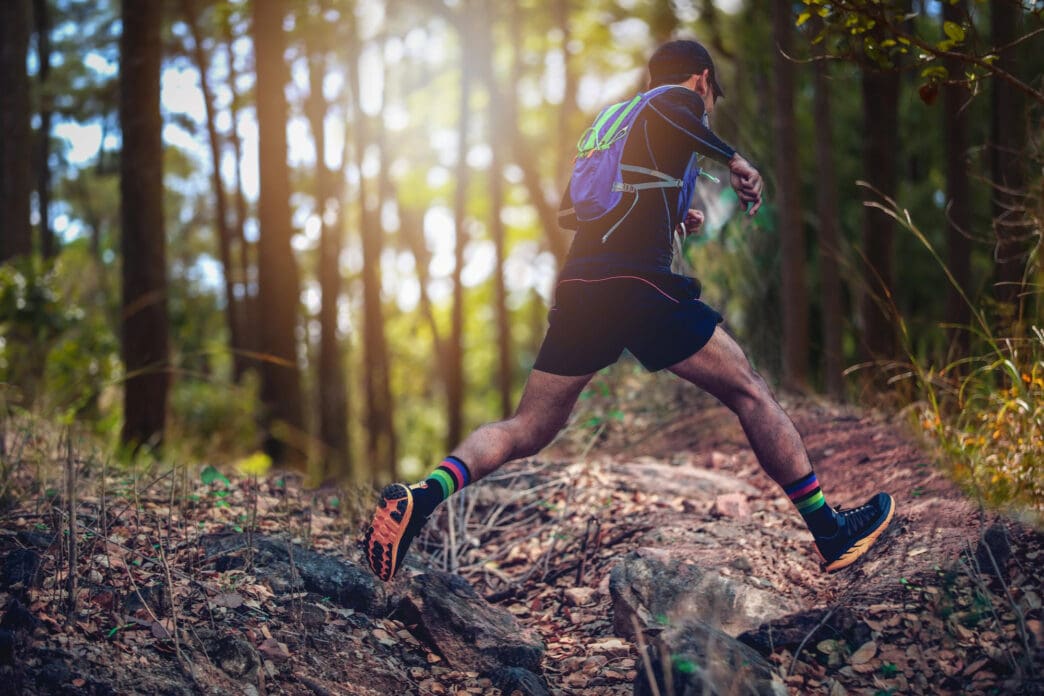A Quick Takeaway
- Florida ultramarathons present unique challenges such as intense heat, oppressive humidity, technical flat trails, and abundant insects, which necessitate specific gear choices and packing strategies.
- The running vest is a critical “mobile aid station” that must be carefully selected for fit and capacity, and strategically packed to ensure safety, comfort, and optimal performance on the trails.
- Key essentials for Florida ultras include adequate hydration and electrolytes, varied nutrition, crucial safety gear, navigation tools, and protection against sun and insects, with strategic packing and practice being vital for efficient access and comfort.
The Story Behind the Trend
- Florida ultramarathons present unique environmental challenges that necessitate meticulous gear preparation, primarily due to the intense heat and oppressive humidity which accelerate dehydration and electrolyte loss, the often-technical and sandy terrain, and the prevalence of insects like mosquitoes and gnats, all demanding specific strategies for hydration, thermoregulation, and protection.
How to Make It Work for You
- Conquering Florida’s unique ultramarathon conditions, characterized by intense heat, humidity, and insects, mandates a highly specialized approach to gear, making the running vest a critical “mobile aid station.” This strategic packing is essential not just for comfort and performance, but fundamentally for runner safety, as it mitigates risks like severe dehydration, heat-related illness, and unexpected trail issues, directly impacting a runner’s ability to successfully complete the race.
The Community View
- Expert ultrarunners and guides emphasize that a running vest is a vital mobile aid station, requiring meticulous and strategic packing of hydration, nutrition, safety gear, and protective items to ensure safety, comfort, and optimal performance in Florida ultramarathons.
- The unique environmental demands of Florida’s ultrarunning landscape, including intense heat, oppressive humidity, abundant insects, and technical flat trails, necessitate specific gear choices focused on hydration, electrolyte replenishment, sun and bug protection, and robust foot care.
- Runners are advised to prioritize personal practice and customization, ensuring their chosen vest provides a secure, bounce-free fit and allows easy access to frequently used items, while also conducting pre-race checks and adapting their packing based on individual needs and race-day forecasts.
Conquering a Florida ultramarathon demands meticulous preparation, and at the heart of that readiness lies your running vest—a vital piece of equipment that serves as your mobile aid station. For anyone tackling the unique challenges of Florida’s trails, from seasoned ultrarunners to ambitious newcomers, understanding how to strategically pack this essential gear is paramount for safety, comfort, and optimal performance. This guide will walk you through the expert strategies for organizing your vest to navigate the Sunshine State’s demanding conditions, ensuring you have everything you need when you need it most.
The Unique Demands of Florida Ultramarathons
Florida’s ultrarunning landscape presents a distinct set of environmental factors that heavily influence gear choices. Unlike mountainous regions, the state’s trails are often flat but can be incredibly technical, featuring sandy sections, exposed roots, and potential water crossings, especially during the rainy season.
The most significant challenges, however, are the intense heat and oppressive humidity. These conditions accelerate dehydration and electrolyte loss, making hydration and thermoregulation critical priorities. Furthermore, Florida’s vibrant ecosystem means encountering abundant insects, particularly mosquitoes and gnats, which can be a constant nuisance without proper protection.
Choosing the Right Vest: Your Mobile Command Center
Selecting the appropriate running vest is the first step in successful packing. Your vest should feel like an extension of your body, providing a secure, bounce-free fit without restricting breathing or movement. Capacity is key, typically ranging from 5 to 12 liters for most ultras, allowing enough space for mandatory gear and personal essentials.
Look for vests with multiple accessible pockets on the front for frequently used items like hydration flasks, gels, and your phone. Rear compartments are ideal for bulkier items such as water bladders, extra layers, or a first-aid kit. Adjustable straps and breathable materials are crucial for comfort over long distances in warm weather.
The Essentials: What Goes Inside
Every item in your vest serves a purpose, contributing to your safety, nutrition, and overall race experience. Prioritize items based on race requirements, anticipated weather, and personal needs.
Hydration: The Lifeline
Adequate hydration is non-negotiable in Florida’s humidity. Most vests accommodate either soft flasks in front pockets or a hydration bladder in the rear compartment, or both. Aim for at least 1.5 to 2 liters of carrying capacity, especially between aid stations.
Beyond plain water, electrolytes are crucial to replenish salts lost through sweat. Carry electrolyte tablets, powders, or pre-mixed drinks to add to your water. Practice your hydration strategy during training to find what works best for your body.
Nutrition: Fueling the Journey
Your nutrition strategy is as individual as your running style. Pack a variety of easily digestible, calorie-dense foods to sustain your energy levels. Gels and chews offer quick bursts of energy, while bars and real food options like pretzels, small sandwiches, or fruit provide more sustained fuel.
Experiment with different food types during training to avoid stomach issues on race day. Remember to pack enough to last between aid stations, plus a little extra for emergencies or unexpected delays.
Safety Gear: Prepared for Anything
Even on well-marked trails, safety gear is a must. A lightweight headlamp or handheld flashlight is essential for pre-dawn starts or running into the night, along with extra batteries. A small, loud whistle can signal for help if needed.
A compact first-aid kit should include antiseptic wipes, various band-aids, gauze, medical tape, pain relievers, and any personal medications. An emergency blanket can provide warmth if you become stranded or injured, though less critical in Florida’s heat, it can be useful for shock.
Navigation: Staying on Course
While many Florida ultramarathons are well-marked, carrying a physical map of the course (if provided) and knowing how to read it offers a reliable backup. A GPS watch with the course loaded is invaluable for real-time navigation. Ensure your watch is fully charged and consider carrying a small portable charger if it’s a multi-day or exceptionally long event.
Sun and Bug Protection: Battling the Elements
Florida’s sun can be relentless, even on cloudy days. Pack a small tube of high-SPF sunscreen and reapply regularly. A wide-brimmed hat or a running cap provides crucial shade for your face and neck. Given the prevalence of insects, a small, travel-sized bottle of insect repellent, preferably with DEET or picaridin, is a wise addition to ward off bites.
Chafe Prevention and Foot Care: Sustaining Comfort
Preventing chafing is key to enduring long distances. Carry a small stick or tube of anti-chafing balm to reapply to critical areas like inner thighs, armpits, and under bra lines. For foot care, pack an extra pair of moisture-wicking socks to change into if your feet get wet or blistered. A small blister kit with moleskin or specialized blister patches can be a lifesaver.
Clothing: Adapting to Conditions
Even in Florida, temperatures can drop unexpectedly, especially overnight or after a rain shower. A lightweight, packable rain jacket or windbreaker can offer protection from sudden downpours or cooler temperatures. Consider arm sleeves for sun protection or a bit of warmth. Always check the race-day forecast, but be prepared for minor shifts.
Strategic Packing: Maximizing Efficiency
How you pack your vest is almost as important as what you pack. Strategic organization ensures easy access to critical items and maintains comfort over hours on the trail.
Weight Distribution and Accessibility
Place heavier items, like a full hydration bladder, closer to your back to minimize bounce and distribute weight evenly. Frequently accessed items—hydration flasks, gels, phone, bug spray—should go in front pockets or side pockets for quick retrieval without stopping or removing your vest.
Weatherproofing and Organization
Use small, lightweight dry bags or zip-top plastic bags to protect electronics, extra clothing, and your first-aid kit from sweat, rain, or accidental spills. Group similar items together (e.g., all nutrition in one pocket, all first-aid in another) to streamline access.
Practice Makes Perfect
Never try a new packing strategy on race day. Practice packing your vest with all your intended gear during your long training runs. This allows you to identify any discomfort, adjust the fit, and learn the most efficient way to access your items while moving. It also helps you gauge the true weight and feel of your loaded vest.
Pre-Race Checks and Adjustments
In the days leading up to the ultramarathon, conduct a final inventory of your vest. Double-check mandatory gear lists provided by the race organizers. Review the weather forecast one last time and make any necessary minor adjustments to your clothing or hydration plan. Familiarize yourself with the locations of aid stations and what supplies they will offer, which can inform what you need to carry.
Prepared for the Challenge
Successfully packing your running vest for a Florida ultramarathon is an art developed through experience and thoughtful preparation. By prioritizing hydration, nutrition, and safety, and strategically organizing your gear, you empower yourself to face the unique demands of the Sunshine State’s trails with confidence. Remember, every item serves a purpose, and a well-packed vest is your ultimate ally in conquering the distance.







